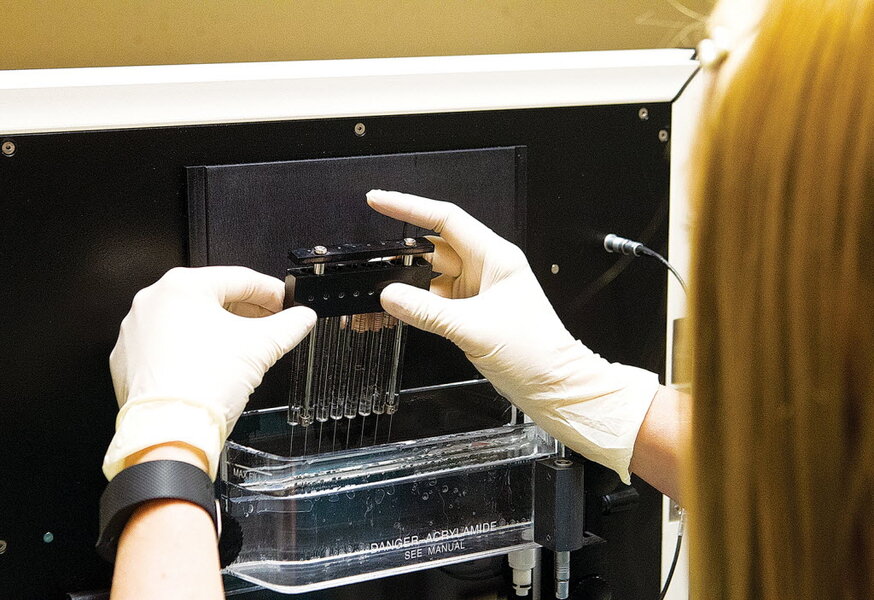Police may someday identify suspects by their hair, say scientists
DNA is a staple of crime scene investigations, particularly those seen on TV, because it is far and away the most accurate method we have of matching evidence to a specific individual.
But not all crime scenes have clear DNA markers, so in 2009 the US National Research Council issued a call for new research and reforms to repair deficiencies in forensic science methods.
In response, a research team lead by Glendon Parker at the Lawrence Livermore National Laboratory in California published a study in PLOS One that looks into the possibility of analyzing genetic mutations of the proteins found in hair as an alternative forensic identification method. While hair analysis has a long way to go before it becomes the crime show staple that DNA testing is, it provides insight into what the future of crime scene investigation might look like.
"We are in a very similar place with protein-based identification to where DNA profiling was during the early days of its development," Brad Hart, director of the national laboratory's Forensic Science Center and co-author of the study, told The Washington Post. "This method will be a game-changer for forensics."
While protein-based identification may never replace the accuracy of DNA testing, researchers hope that it will eventually provide a valid alternative for when DNA fails – like when it is exposed to damaging water, light, heat, or the natural breakdown over time.
Like DNA, hair proteins contain genetic variation because DNA provides the code for how the amino acids that make up proteins are structured. Unlike DNA, proteins do not break down easily and can survive for longer periods of time.
"Because protein is more abundant and more robust than DNA, this potentially opens up enormous avenues of research in bioarchaeology and forensic science that couldn't have been tackled before," said Andrew Wilson at the University of Bradford in England, who provided the old hair samples used to test the technique, to New Scientist.
In order for proteins to be a valid alternative however, the frequency at which these mutations occur within a population must be assessed. The research team discovered 185 protein markers across 82 hair samples coming mostly from European-Americans but also including samples from African-Americans, Kenyans, and even six from bodies in cemeteries from the 1750s to 1850s. Each sample proved to contain a unique number and pattern of protein markers.
The researchers acknowledge that follow-up research must be done before hair protein is a valid alternative to DNA. The sample size needs to be larger and more varied to corroborate the findings. In addition, the method currently requires more hair than would be likely left behind at a crime scene.
Christopher Hopkins, director of the Forensic Science Graduate Program at the University of California at Davis, told The Washington Post he had additional questions pertaining to the study, including whether other factors such as diet or the environment can change protein markers over time.
"The best-case scenario is you will eventually have, in five to 10 years, a complementary but separate method than we currently have to correctly identify or to exclude the right person involved in a crime,” said Glinda Cooper, director of science and research at the Innocence Project, which advocates for prisoners seeking exoneration through DNA testing.






